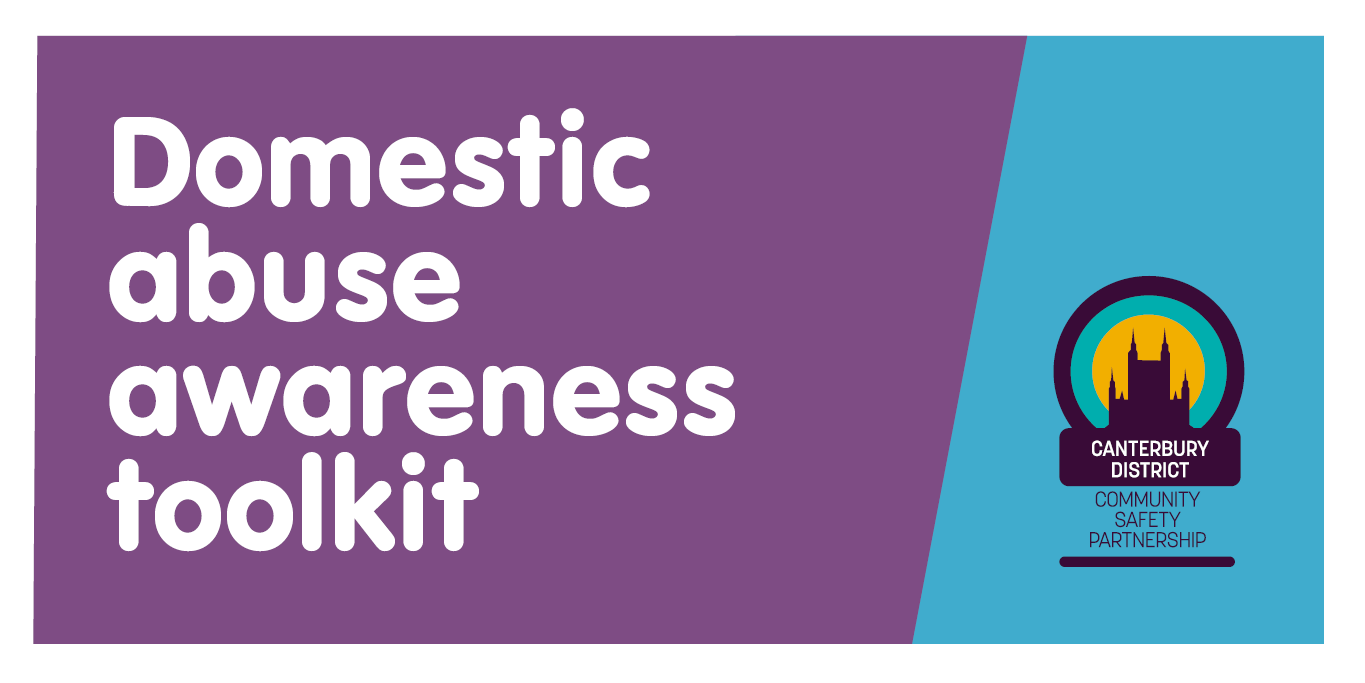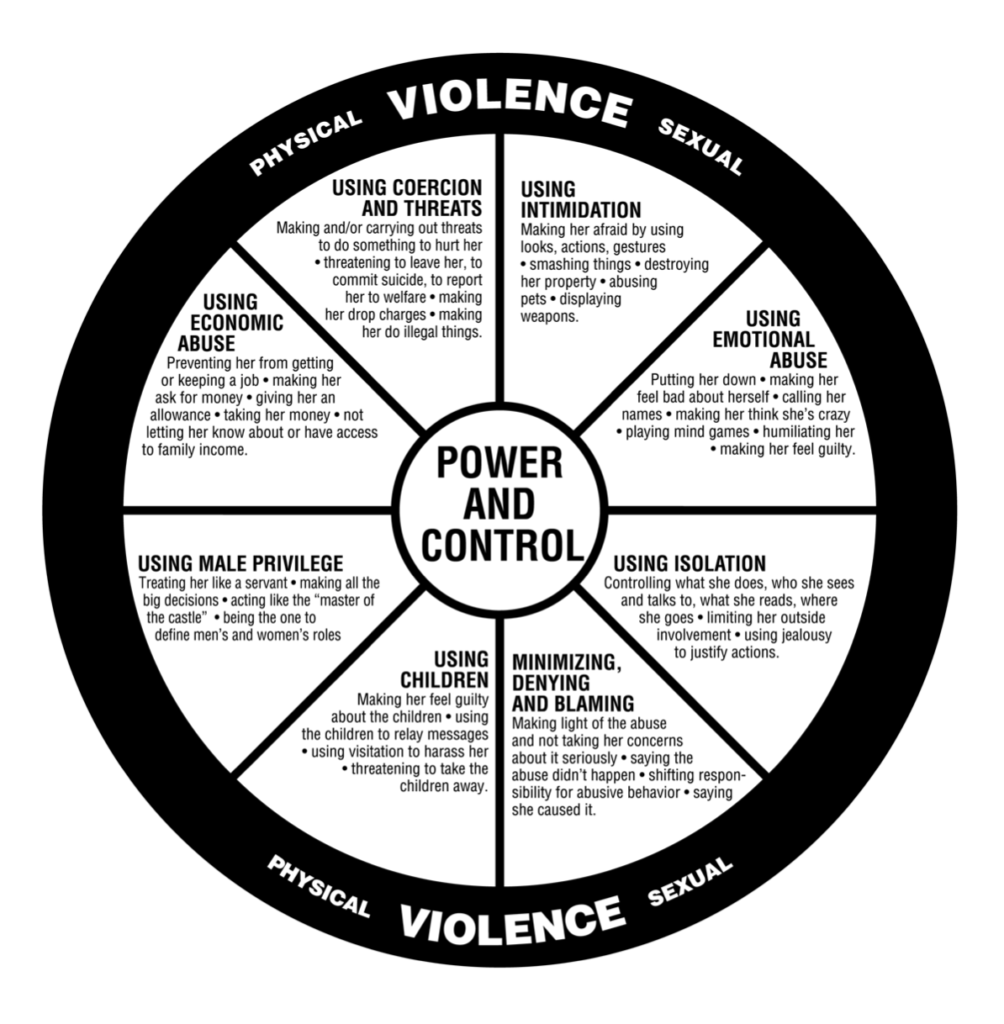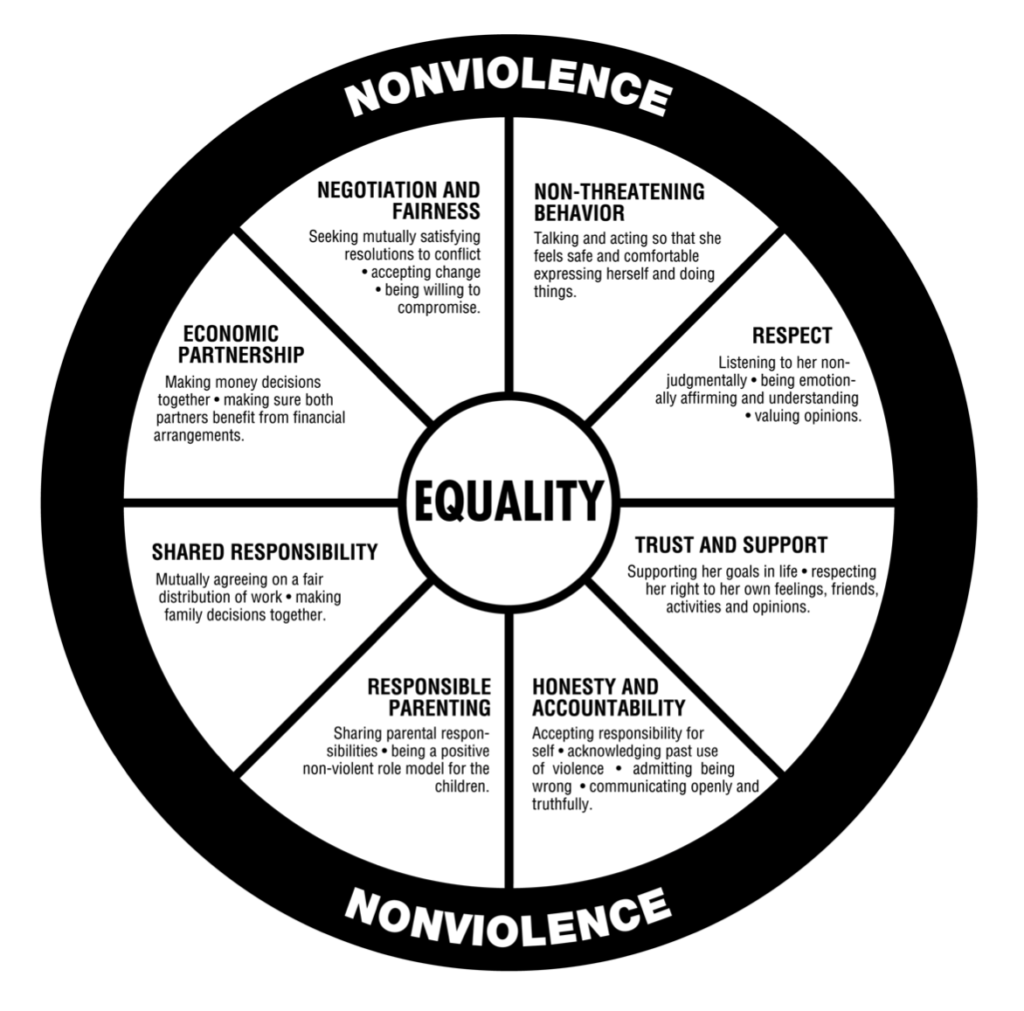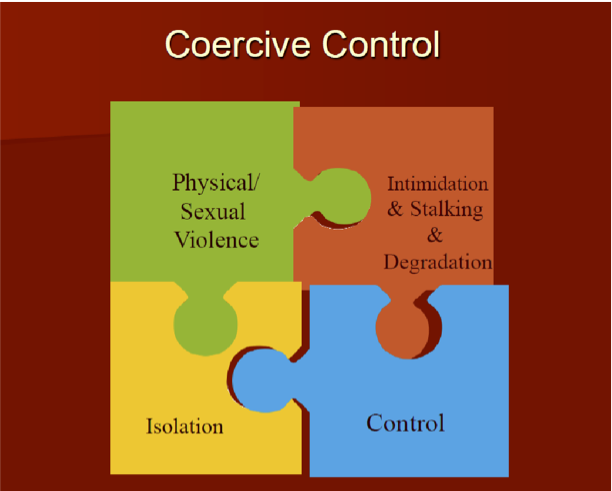Domestic Abuse toolkit

Introduction
We know that most often the first-time survivors speak about domestic abuse it is to friends, family, or someone in the community. To support local communities in responding to this, Canterbury City Council and Rising Sun domestic violence and abuse service have developed, a webinar explaining our community response to domestic abuse, called ‘Our Response ‘. To ensure survivors get the right response the first time they speak about abuse.
‘Our response’ wants our community to :
∙ Raise awareness of domestic abuse and challenge cultural acceptance, victim blaming stereotypes and myths around domestic abuse.
∙ Listen, believe, and validate survivors’ experiences. ∙ Share information and signpost survivors to access support.
Understanding Domestic Abuse
Domestic Abuse Defined – UK Government
Any incident or pattern of incidents of controlling, coercive or threatening behaviour, violence or abuse between those aged 16 or over who are or have been intimate partners or family members regardless of gender or sexuality. This can encompass but is not limited to the following types of abuse:
- psychological
- physical
- sexual
- financial
- emotional
Controlling behaviour is: a range of acts designed to make a person subordinate and/or dependent by isolating them from sources of support, exploiting their resources and capacities for personal gain, depriving them of the means needed for independence, resistance and escape and regulating their everyday behaviour.
Coercive behaviour is: an act or a pattern of acts of assault, threats, humiliation and intimidation or other abuse that is used to harm, punish, or frighten their victim.
The definition Expanded
https://www.womensaid.org.uk/information-support/what-is-domestic-abuse/
Resources for naming and understanding domestic abuse
Duluth Power and Control Wheel (Fig.1) was developed by the work of DIAP in direct and intensive consultation with survivors of domestic and sexual abuse. The model proposes that the main aim of domestic and sexual abuse is about ‘Power and Control’. The Power and Control wheel outlines the abusive behaviours used by perpetrators to establish and maintain control over their partner. This is an effective tool to share with survivors, as this can help them to name their experiences as abusive for the first time. The hub at the centre of the wheel represents the abuser’s desire for power and control. The spokes of the wheel represent the different tactics used by abusers in order to gain power and control over their partners. The outer wheel includes physical and sexual abuse, where abusers often use tactics (spokes) to threaten physical or sexual abuse. It also reflects the pattern of escalation of abuse. It’s important to note that not all abusive relationships will feature physical and/or sexual violence and that the impacts of non-physical abuse are just as significant, if not more so, for some survivors.

The Equality Wheel, (Fig. 2) was also developed by DAIP. It represents an alternative model to that of the Power and Control wheel and what an equal, healthy relationship looks like. It is an illustration of relationships which are based on mutual respect and shared responsibilities. The Equality Wheel is particularly useful for work with survivors and perpetrators, as well as for general education and awareness-raising purposes

Coercive Control
Cross Governmental Definition
- Controlling behaviour is: a range of acts designed to make a person subordinate and/or dependent by isolating them from sources of support, exploiting their resources and capacities for personal gain, depriving them of the means needed for independence, resistance and escape and regulating their everyday behaviour.
- Coercive behaviour is: an act or a pattern of acts of assault, threats, humiliation and intimidation or other abuse that is used to harm, punish, or frighten their victim.
Controlling or Coercive Behaviour
Serious Crime Act 2015
Section 76
- Previously related criminal charges have been (and can still be) prosecuted using laws relating to individual incidents of crimes.
- The new criminal definition enables a pattern of behaviour and the cumulative impact of both criminal and non-criminal behaviour to be prosecuted.
- Awareness of the crime also aims to promote understanding of the role of coercive control as the set of behaviours that entrap survivors in abusive relationships.
Coercive Tactics
Violence – Physical assaults, threats of physical assaults, sexual assault, strangulation
Intimidation – threats to kill, threats to family, destruction of property, enforced criminality
Isolation – not talking, move someone to a new area, locking in the house, not seeing family and friends, removal of self (perpetrator)
Control – what to wear, how to dress, who you can see or speak to, rules at home, not eat certain foods, sleep where and when, take care of the house, not to read, watch tv, hobbies
Communication – Searching through drawers, phones, handbags, bank statements, mobile phone messages, computers
Surveillance – Timing activities, calls, visits with friends and family, stalking, check the car mileage, used a recorder, checked clothing,
Degradation – Name calling, swearing, bringing up the past, sexual abuse, anal intercourse, denied toilet and sanitary products
Sexual control – When and how to have sex, who to have sex with, not having sex, watching pornography, rape and sexual assault
Financial control – not allowed to work, where to work, check credit card spending, take money
Micromanaging – crushes the spirit even more fundamentally than the deprivation of basic necessities because it leaves little space for a person to breathe’. (Stark. E, 2007. P.272)

Film – To observe the tactics and impact of domestic abuse
This short animated film produced by Scottish Women’s Aid – consolidates all the above
VAWG (Violence against women and girls)
The United Nations defines violence against women as:
“…any act of gender-based violence that results in, or is likely to result in, physical, sexual or psychological harm or suffering to women, including threats of such acts, coercion or arbitrary deprivation of liberty, whether occurring in public or in private life”
Declaration on the elimination of violence against women, 1993
Violence against women is a manifestation of historically unequal power relations between men and women, which have led to domination over and discrimination against women by men and to the prevention of the full advancement of women, and… violence against women is one of the crucial social mechanisms by which women are forced into a subordinate position compared with men.” UN Declaration on the Elimination of Violence Against Women
VAWG refers to a number of different types of abuse that occur around the world that disproportionately affect women, because they are women, and are overwhelmingly perpetrated by men. The VAWG framework does not exclude the fact that anyone can experience abuse and that anyoneof any gender can perpetrate abuse. However the framework exists to reflect the gendered nature of these crimes
8 Strands
- Domestic violence and abuse
- Sexual violence, abuse and exploitation
- Sexual harassment and bullying
- Stalking
- Trafficking and forced prostitution
- Female genital mutilation (FGM)
- Forced marriage
- Crime committed in the name of honour
If we are interested in ending domestic abuse we should be interested in ending all these other forms of VAWG as they all reinforce and uphold each other and many women will experience multiple forms of abuse throughout their lives.
VAWG is not inevitable and it is preventable. But if we want to prevent it then we have to look at the root causes which is gender and gender inequality
Accessing support
Support agencies can help explore and understand your situation and look into the options available in many areas including:
• personal safety planning
• access to specialist counselling and support groups for you and your children
• support to find legal advice and representation
• support to claim benefits, budgeting and money advice
• support to work with other agencies, housing and moving on services
National support agencies:
National Domestic Abuse Helpline 24hrs 0808 2000 247
Men’s Advice Line (Respect) 0808 801 0327
Support for honour based abuse/ arranged marriage (Karma Nirvana) 0800 599 9247
LGBT+ Helpline (Galop) 0800 999 5428
Deaf Helpline (SignHealth ) 0207 3947 2601 or text 07970 350666
If you are in danger, please call 999 immediately.
Kent support agencies:
If you are resident of Ashford, Canterbury or Folkestone & Hythe districts contact Rising Sun Domestic Violence and Abuse Service for free confidential advice and support:
Phoneline: 01227 452852 Monday to Friday 9am to 5pm
Website: risingsunkent.com
Email: admin@risingsunkent.com
For full list of domestic abuse support services for Kent & visit domesticabuseservices.org.uk

Published: 30 November 2020